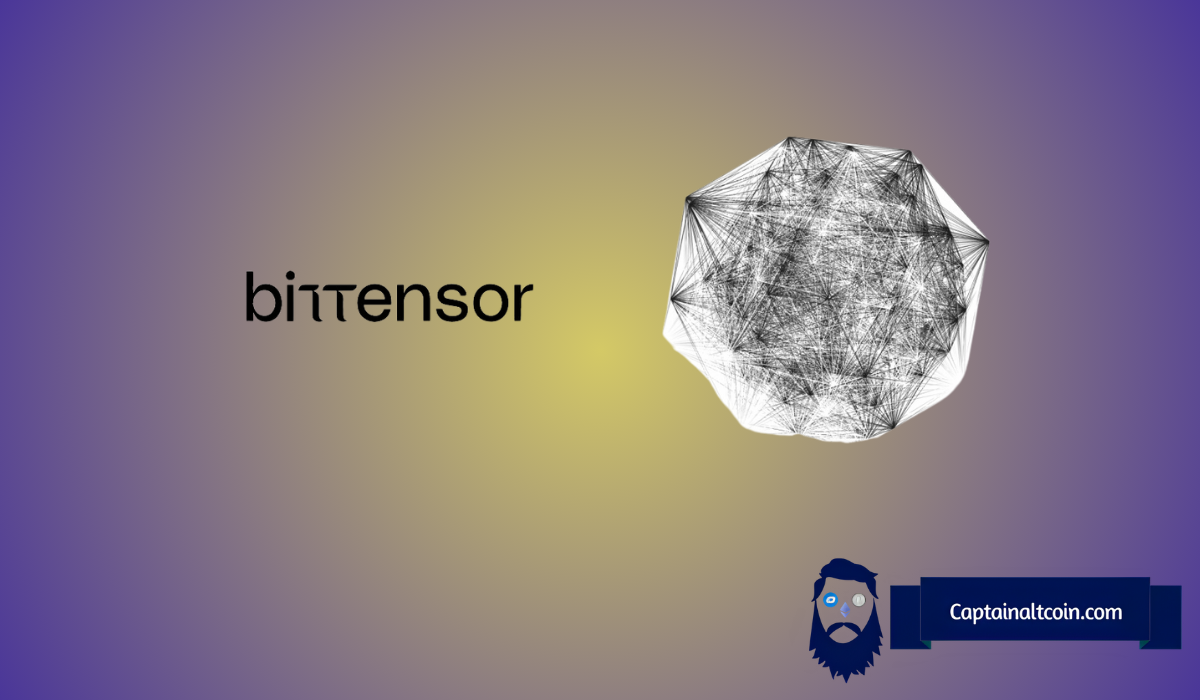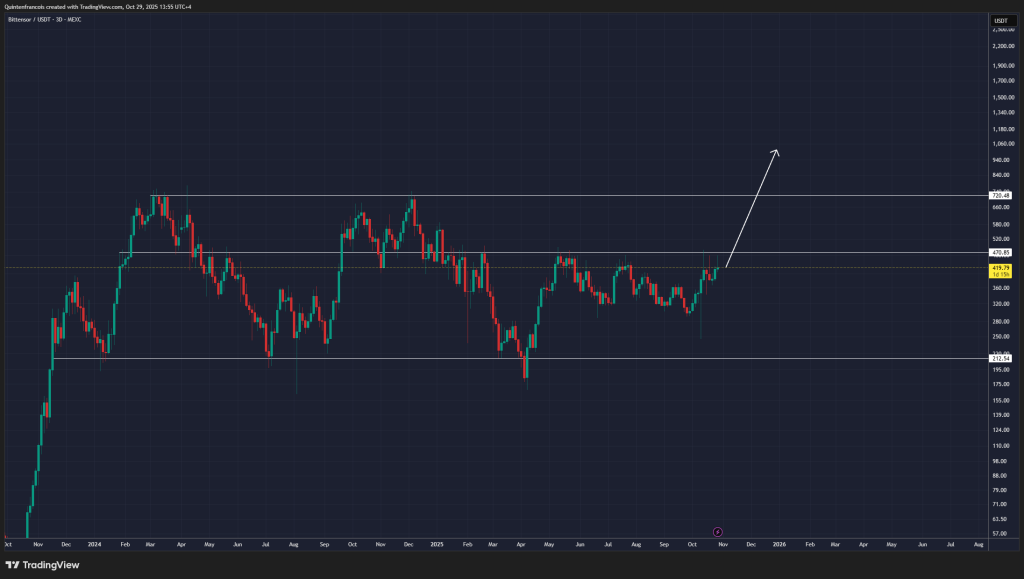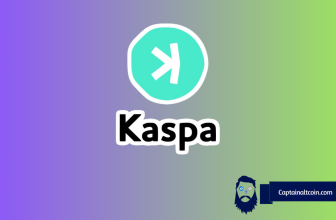
Every few years, crypto markets get reshaped by events that redefine supply and demand. This December will mark a big moment for Bittensor. Around December 10th –13th, 2025, daily TAO emissions will fall from 7,200 tokens to 3,600 tokens That single change could transform how Bittensor price behaves in the months that follow.
Bittensor’s design has always been different. The network rewards participants who contribute computing power for AI workloads, distributing TAO tokens directly to those who add value. There were no team allocations, venture capital investors, or insider unlocks. Every token in circulation was earned through network activity.
That setup means emissions are the main source of market supply. When those emissions drop by 50%, the amount of new TAO entering circulation instantly shrinks. With fewer tokens available to sell each day, the balance between supply and demand tilts often resulting in higher prices.
It’s the same principle that has powered Bitcoin’s halving cycles. Each time Bitcoin’s block reward was cut, a supply shock followed. Bittensor now faces its own version of that cycle, and the market seems to be waking up to what it means.
What you'll learn 👉
How Quinten Sees the TAO Price Setup
Crypto analyst Quinten | 048.eth shared a detailed view of TAO’s chart on his X page, showing how the token has been locked in a long accumulation range for nearly two years. According to his analysis, TAO has been trading between roughly $212 and $470, building a solid base while waiting for a catalyst strong enough to push it higher.

Quinten’s chart shows the halving could be the spark TAO needs. He thinks the price could break above $470 and rise toward $720. If momentum builds, TAO price might reach $1,000 by the end of 2025. It could also reach $2,000 in early 2026. These aren’t guarantees, but they show how the halving could shift the market from quiet accumulation to steady growth.
Why the TAO Token Could Feel a Strong Supply Shock
When emissions drop from 7,200 to 3,600 TAO per day, miners and validators will receive fewer tokens for the same work. That naturally reduces the number of new coins entering the market, which has been the primary selling pressure until now.
Because Bittensor doesn’t have large pre-mined allocations or venture unlocks, this supply cut could have a stronger effect than in projects with other sources of selling. Once the market realizes that new TAO tokens are becoming scarce, even small increases in demand could move the price significantly.
The interesting part is that this will be the first halving in Bittensor’s history. Early halvings tend to have the strongest impact, since they shift token distribution dynamics in a way the market hasn’t experienced before.
The Broader Impact on the Bittensor Ecosystem
The halving will change how people use the network. Miners and validators will earn less TAO. They may focus on better performance and hold more of their rewards. This can make the ecosystem stronger and more sustainable over time.
The Bittensor token isn’t just a trading asset; it’s the fuel that keeps decentralized AI computation running. When its supply tightens, it can also influence how value circulates within the network, potentially making TAO more desirable to both contributors and holders.
Read Also: Pi Network Funds “Android for Robots”: PI Price Comes Alive Again
If Bittensor acts like Bitcoin, the market could see excitement before the halving. Short-term swings might follow as traders react. Scarcity may push the TAO price higher. Quinten expects it could reach around $1,000 by the end of 2025 and $2,000 in early 2026.
Subscribe to our YouTube channel for daily crypto updates, market insights, and expert analysis.








